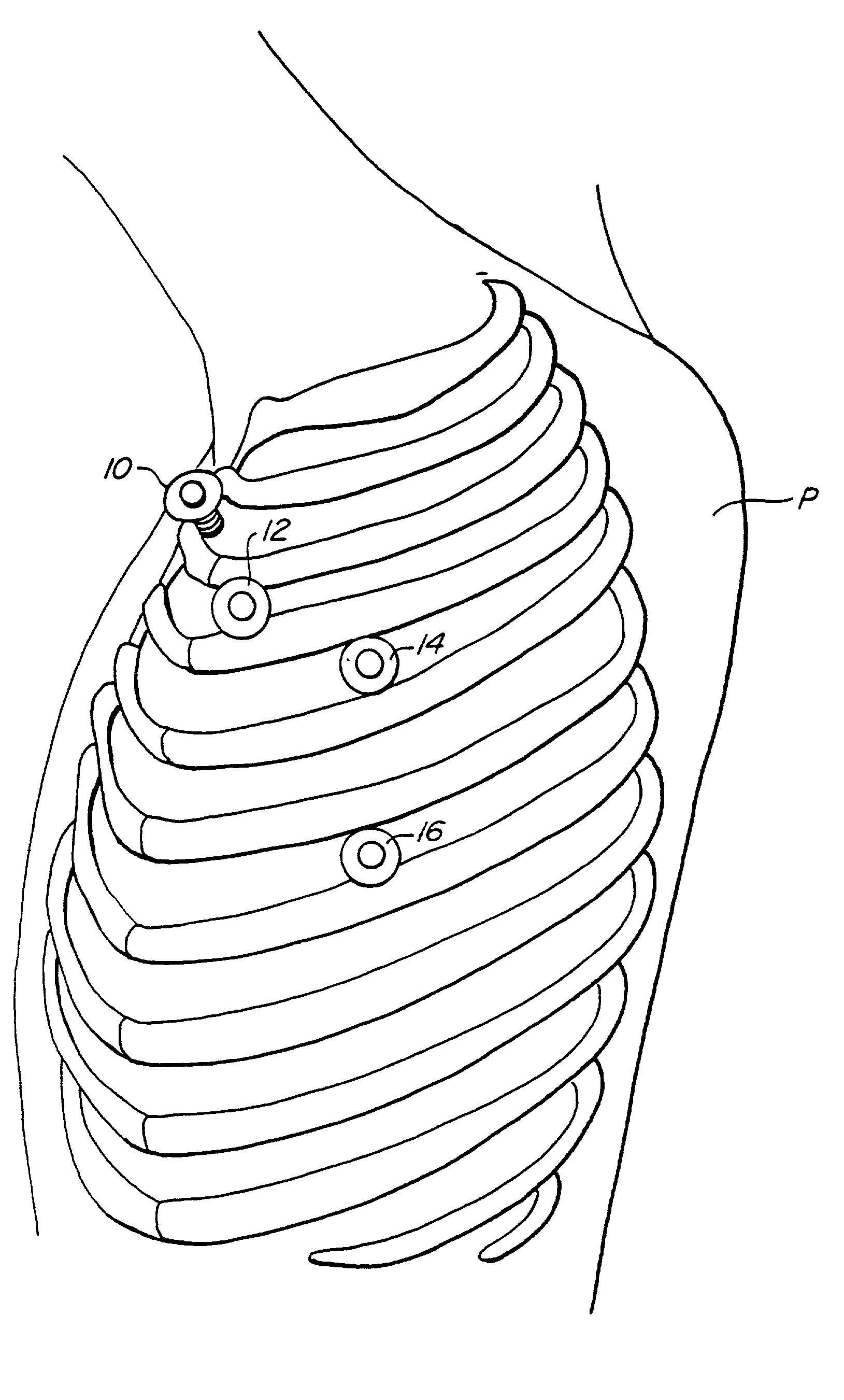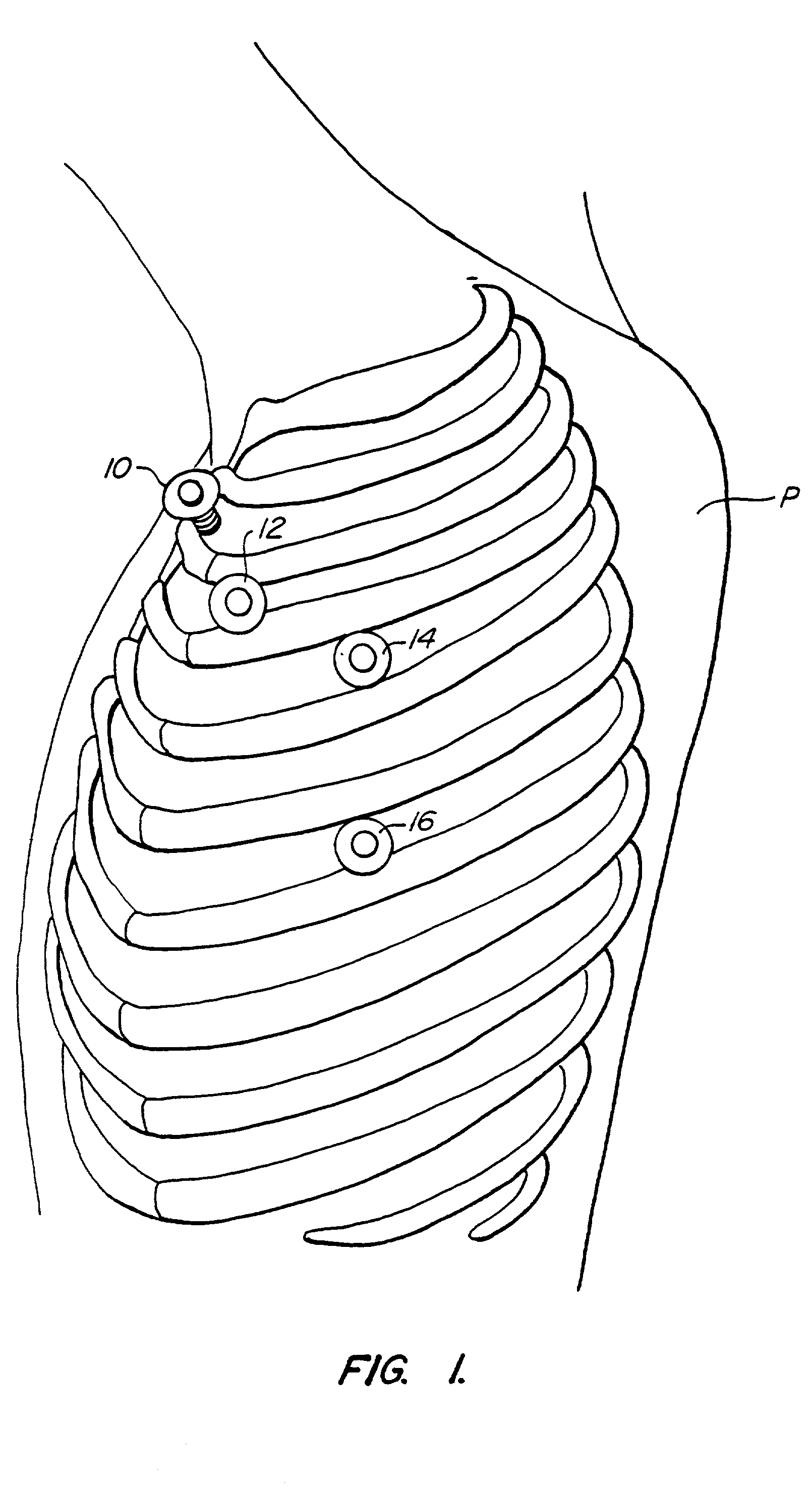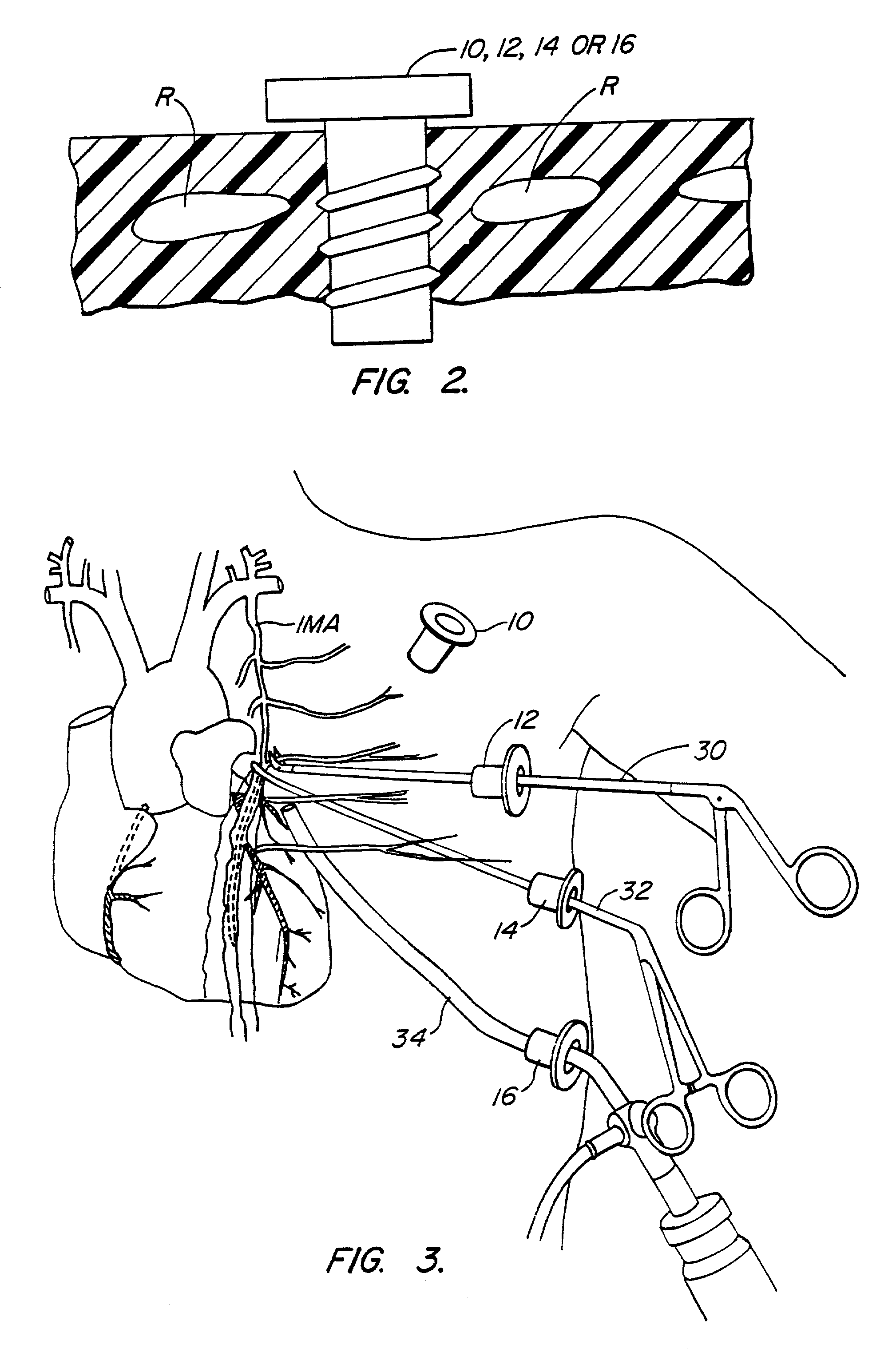Methods and systems for performing thoracoscopic cardiac bypass and other procedures
a thoracoscopic and cardiac bypass technology, applied in the field of thoracoscopic methods for performing cardiac procedures, can solve problems such as the release of emboli from the aortic lumen
- Summary
- Abstract
- Description
- Claims
- Application Information
AI Technical Summary
Benefits of technology
Problems solved by technology
Method used
Image
Examples
Embodiment Construction
[0023] The methods of the present invention are suitable for performing a variety of surgical cardiac procedures where the heart will be stopped and the patient supported by cardiopulmonary bypass. The procedures will be minimally invasive and be performed using surgical instruments introduced through a plurality of trocar sheaths placed through the patient's chest. A viewing scope, such as a thoracoscope, will be placed through at least one of the trocar sheaths, and selected surgical instruments will be placed through others of the trocar sheaths and their manipulation viewed by the treating physician using the viewing scope. The methods of the present invention are particularly suitable for forming coronary artery bypass grafts, but will also find use in a variety of other procedures, such as mitral valve repair; mitral valve replacement; thrombectomy of the pulmonary artery, left atrium, or left ventricle; removal of atrial myxoma; atrial or ventricular septal defect closure; pa...
PUM
 Login to View More
Login to View More Abstract
Description
Claims
Application Information
 Login to View More
Login to View More - R&D
- Intellectual Property
- Life Sciences
- Materials
- Tech Scout
- Unparalleled Data Quality
- Higher Quality Content
- 60% Fewer Hallucinations
Browse by: Latest US Patents, China's latest patents, Technical Efficacy Thesaurus, Application Domain, Technology Topic, Popular Technical Reports.
© 2025 PatSnap. All rights reserved.Legal|Privacy policy|Modern Slavery Act Transparency Statement|Sitemap|About US| Contact US: help@patsnap.com



